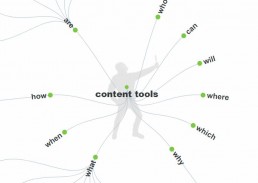Five templates for emailing journalists
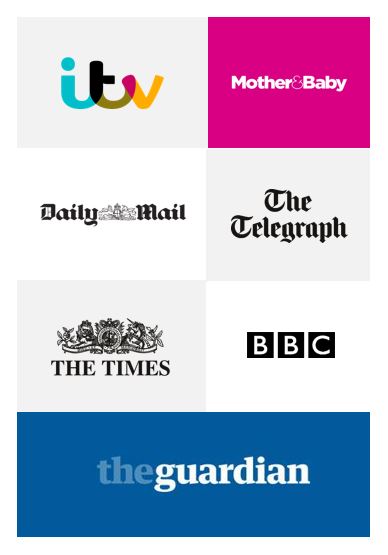
We often hear from people who want to know exactly what to say when they email journalists. What kind of information do journalists want? Should I be chatty or formal, offer lots of description or get straight to the point?
To answer these questions and more, we've used our 30 years of combined media experience to generate five templates for emailing journalists which you can keep hold of and use again and again for all kinds of messages.
From replying to journalist requests to sending out press releases to pitching stories, these templates have all been tried, tested and developed by experienced digital PR Corinne Card, who's used them to gain press from places like the Independent, Daily Mail & BBC. They've also been checked & edited by Jon Card, a Guardian business journalist who receives hundreds of email pitches every day.
Join our mailing list below for occasional freebies, offers and media advice and we'll send your five templates for emailing journalists as a first instalment. These templates will be your shortcut to success with journalists, so you won't have to learn the hard way!
Know your audience & THEY will make you famous
When you get to know your audience; who they are, how they think and what they really want, you can’t help but start to take their perspective. And perspective-taking can be powerful. Social psychologist Adam Galinsky says: “When I take your perspective, and I think about what YOU really want, you’re much me likely to give me what I really want.” When you know your audience inside-out, you can create content that will surprise and delight them. And when they react to that content, you can learn even more.
Use audience data to create a virtuous circle of content
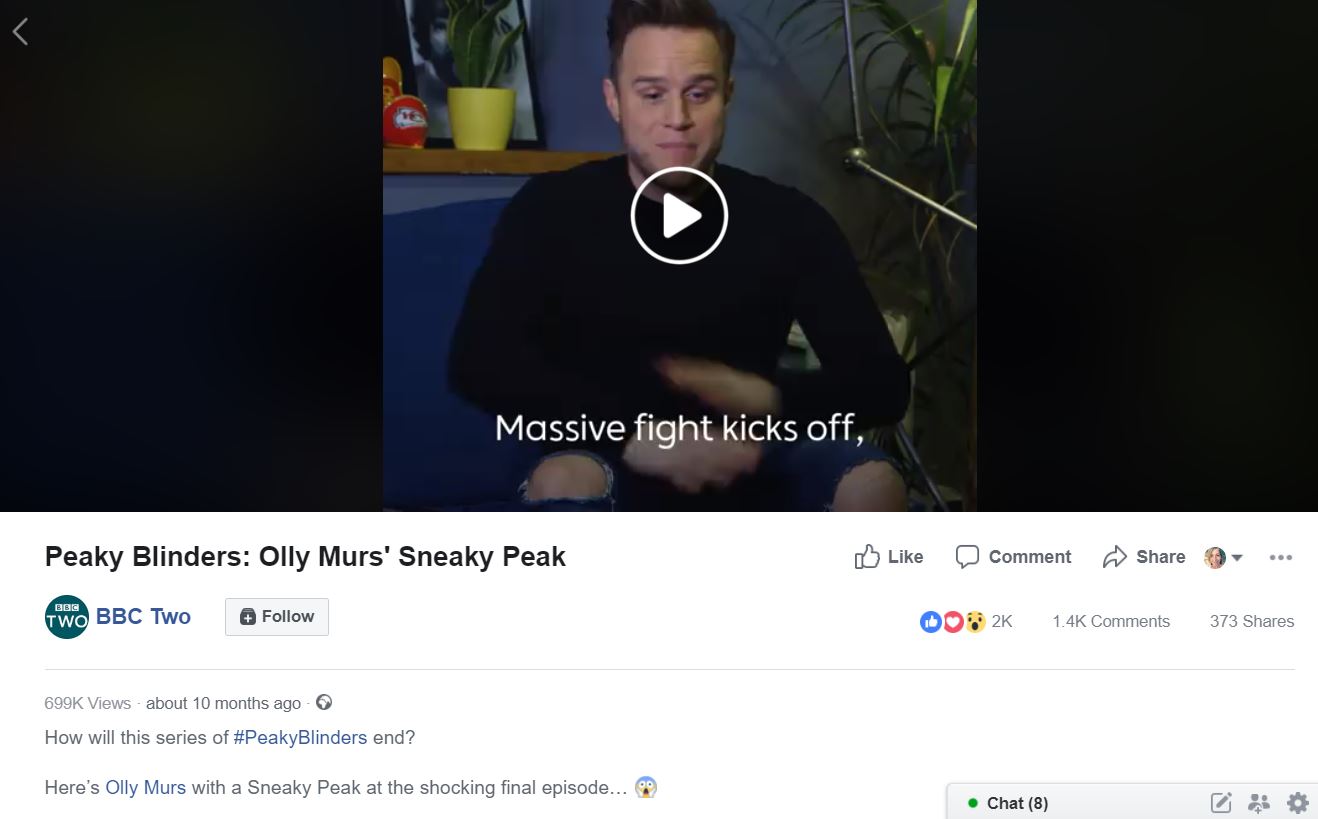
At last week’s Ada’s List conference, BBC content strategist and founder of The Storm Collective Rachelle Denton showed how you can use the data which results from content to move you to another, more empathic and insightful stage - and how you can do this continually, in an ever-evolving circle of content creation and improvement. It’s a strategy Rachelle’s used to market successful TV shows like Peaky Blinders and Killing Eve - to thrilling effect.
When Rachelle was looking for influencers to help market Peaky Blinders, she didn’t start with the budget and see what she could buy. Instead, she started with the audience and worked out how she could surprise and delight them.
Looking into Peaky Blinders’ audience data, she found singer-songwriter Olly Murs was a fan of the show. So much so, it turned out, that he would be delighted to have early access to Peaky Blinders clips and share his reactions with his millions of online fans, rather than a expensive commercial agreement.
To further illustrate the value of audience data, Rachelle used the example of Spotify. The brand cleverly reflected their own customers' data back to them with a string of amusing, shareable ads. Once posted onto social media, Rachelle noted, data-driven campaigns like these can then feed off the comments and reactions they gain to help brands create yet more powerful, audience driven content.
Nurture the influencers in your audience
Influencers are an interesting case – they’ll often help you to illustrate a point in a workshop, for example, as it helps to show someone people recognise. That’s why I showcased Martha Lane Fox in a press pic to help describe the ways you can illustrate an online business. It didn’t occur to me at the time that the lastminute.com founder herself might then become part of that workshop’s audience when she spotted the photo online.
It’s worth bearing in mind which influencers might take an interest in your work in advance of any business activity. With Twitter, influencer interaction with your content is reasonably likely. Think of ways your brand can increase the likelihood of surprising and delighting any relevant influencers.
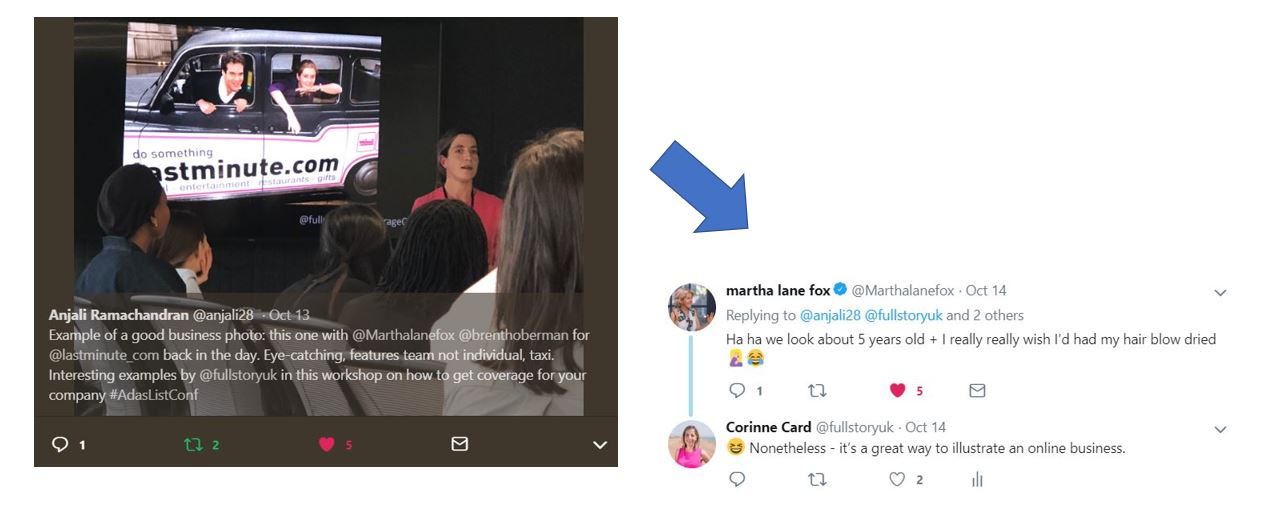
Build a leadership team that publicly reflects your audience
Knowing your audience is an important part of getting press for your business. If you know you want to appeal to a diverse audience, it makes sense to have a diverse team you can showcase in the press.
Marissa Ellis at Diversily created a 'Change Canvas' for the Ada's List conference, which highlighted the case for increasing diversity in the workforce, from the various perspectives of people at the event. Alongside the wonderful points, including the importance of supportive internal networks and creating an atmosphere of psychological safety, is a media-related one from me: diverse teams will help you get press.
Press photos which only show middle-aged men in suits within your leadership team are boring and won't help your company appeal to a wide range of audiences. People tend to identify with others they perceive to be like them, so it makes sense to offer the diverse people in your audience a true mirror to help them identify with your brand and the people who run it.

Know your audience: key points to remember
- Your audience is more diverse than you think. Learn who they are, then surprise & delight them
- What interesting things does the data show about your audience? Learn, iterate & repurpose what you're learning in a virtuous circle of content
- Find the influencers within your audience - Martha Lane Fox was effectively an audience member for me, Olly Murs was one for Rachelle
- Reflect your audience in your team - Diversily's Change Board at the Ada's List conference shows the business case for creating a diverse team. One factor of this is your audience knowing they're represented at the highest levels of your organisation. This goes hand in hand with generating more interesting, relatable stories for the press
VIDEO: Why telling the story of your business is key to getting press
Being able to tell the story of your business is a major step towards gaining press coverage.
Famous entrepreneurs such as Richard Branson, Anita Roddick and James Dyson are all examples of expert storytellers, whose businesses have reaped the rewards of their tale-telling expertise.
WATCH Jon Card explain why this matters so much to business journalists like him:
Must-have content marketing tools for 2018
Everyone knows that content is king. We love content because we know it can also be the key to gaining excellent coverage from the press. The good news is, savvy companies have created a number of excellent tools to help people create audience-driven, press-worthy content.
Let’s look at what some of the top tools do and how they can help you generate great content.
TOP CONTENT MARKETING TOOLS
- YouGov Profiles show traits of your typical user in a fun, interactive way. The 'lite' version is free
- Answer The Public shows the questions people are asking about your brand or industry. Free to use & makes cool diagrams
- Google Trends again, free. It reveals what search terms are trending - including YouTube search if you're creating video content
- Buzzsumo shows the most popular articles according to social media shares. A paid for platform but you can do a free trial
- ahrefs shows where you and your competitors are getting inbound links. You could also try the Moz Link Explorer for free
- Google Alerts keep you up to date with relevant industry topics and brand mentions. Quick to set up and manage - do it now!
- Google Surveys can help you research your market. Choose a one question survey for highly affordable research
- Twitter polls can help you tailor content as well a generate it
LEARN ABOUT YOUR TYPICAL USER
Knowing your consumers’ needs and interests gives you the power to connect with them more effectively. Now, you can craft messages and campaigns which resonate with your user and encourage them to engage. Tools which can help you find out about your typical user include YouGov profiles. Here’s the free version: yougov.co.uk/profileslite#

GAIN INBOUND LINKS WITH YOUR CONTENT
Great content starts with a deep understanding of the consumer’s perspective. What are their pain points? What are they thinking? What specific information are they looking for? Answering common questions is a way to create content people will be interested to read, and relevant sites are more likely to link to. Try answerthepublic.com to find out what people are asking.
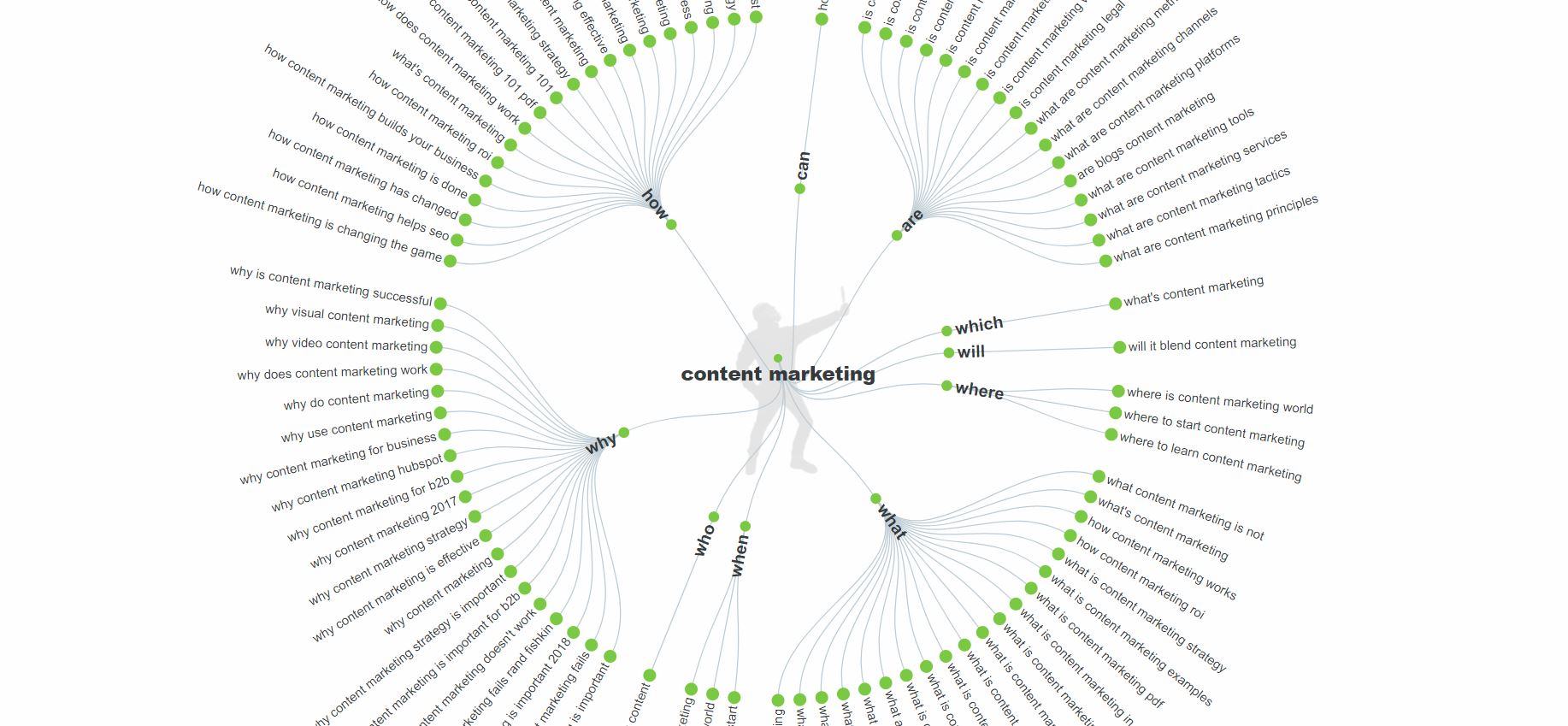
MAKE YOUR CONTENT FRESH
Users will react well to content that is fresh. Google Trends can help you identify seasonal and trending terms, as well as terms which have become less interesting to people over time. You can also search for top terms on YouTube specifically. AND, you can compare terms to find out which you should use to provide a fresh and interesting title. https://trends.google.com/trends/
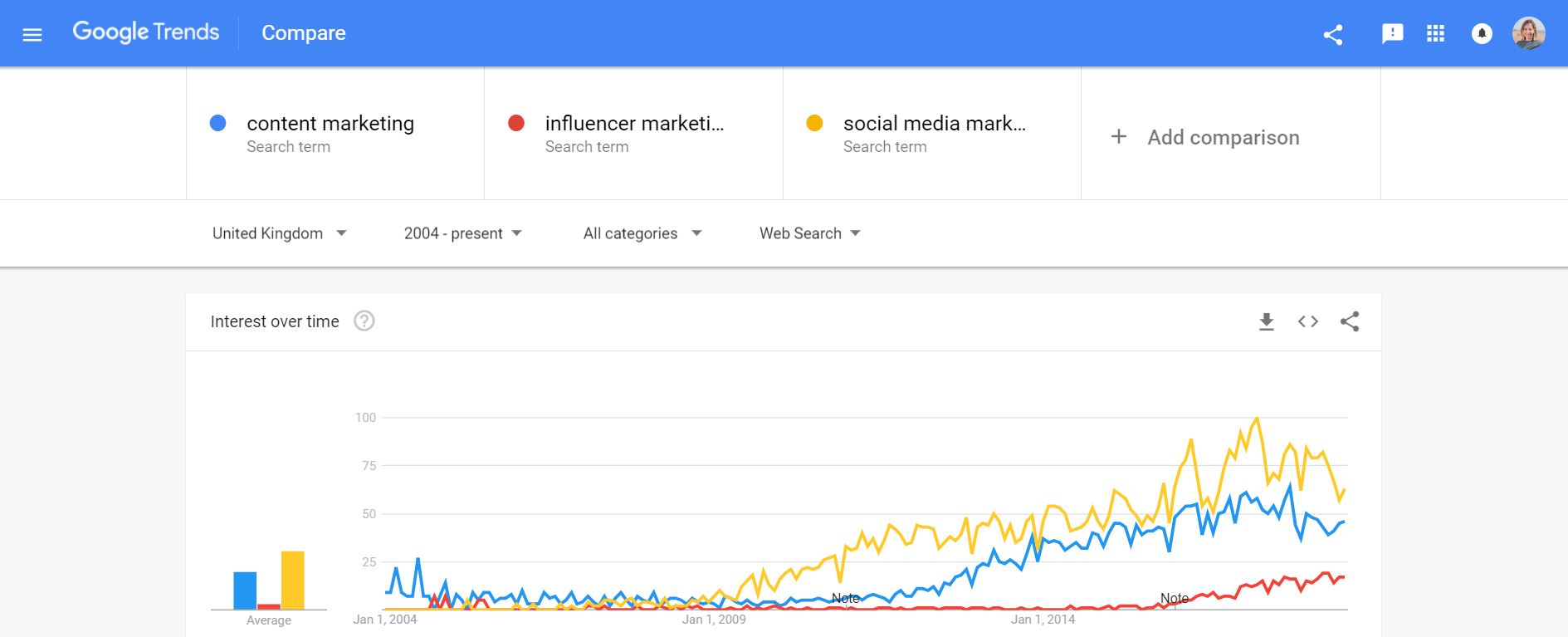
LEARN FROM HIGHLY SHARED CONTENT
Finding out which content which has been shared the most in your industry has a range of benefits. It can help you identify content you’ve created which has been popular, so you can plan similar kinds of posts and articles. It can also help you gain ideas from competitors as well as other influencers. Use buzzsumo.com to search relevant keywords, sites and pages to find out what works.
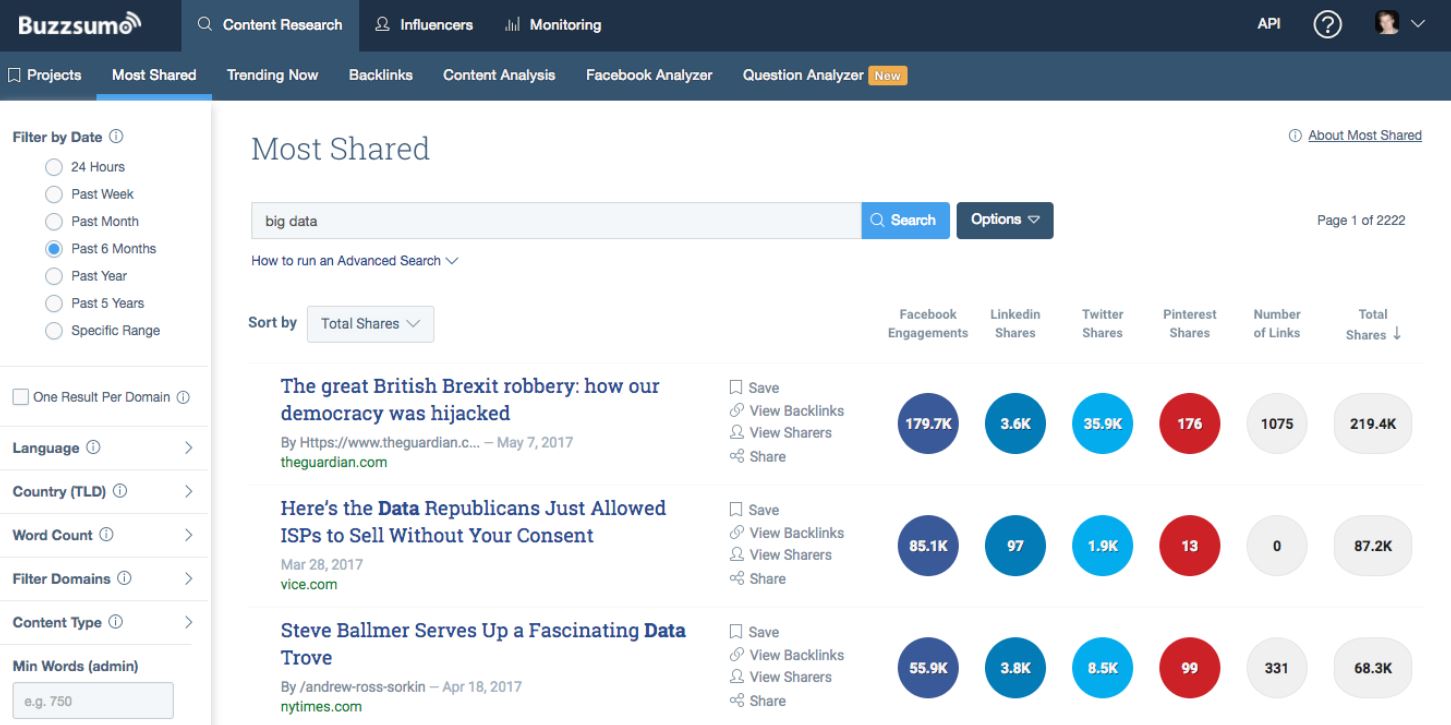
LEARN FROM INBOUND LINKS
ahrefs shows where you and your competitors are gaining inbound links to your site. This can help you identify interested audiences, generate content topic ideas and provide insights into the type of content that’ll gain more links to your site. A free tool you can try to find out more about your inbound links is Moz’s Link Explorer: https://moz.com/link-explorer
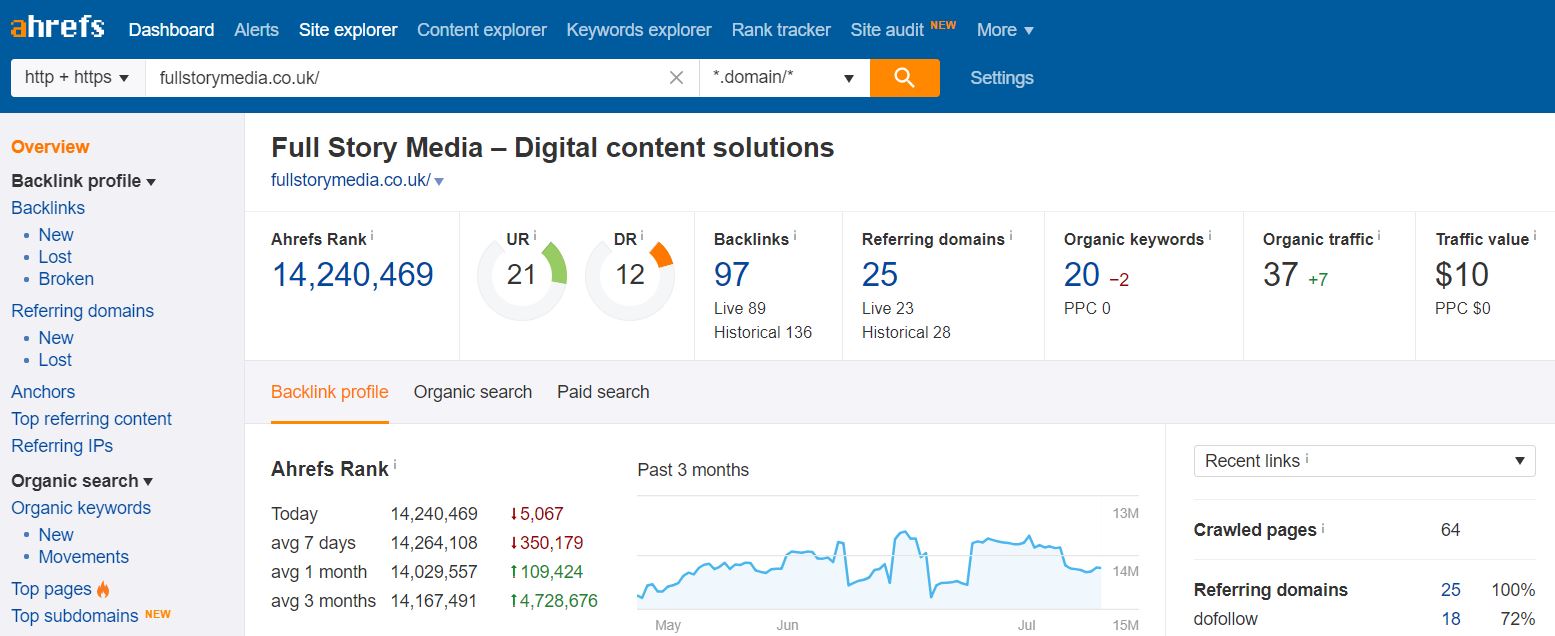
LEARN FROM FRESH INDUSTRY ARTICLES
When you’re a content creator, nothing can beat being up to date with the goings on in your industry. Setting up Google Alerts for relevant terms is quick and easy, and will lead to a deeper understanding of your industry, relevant topics and how they’re developing over time.
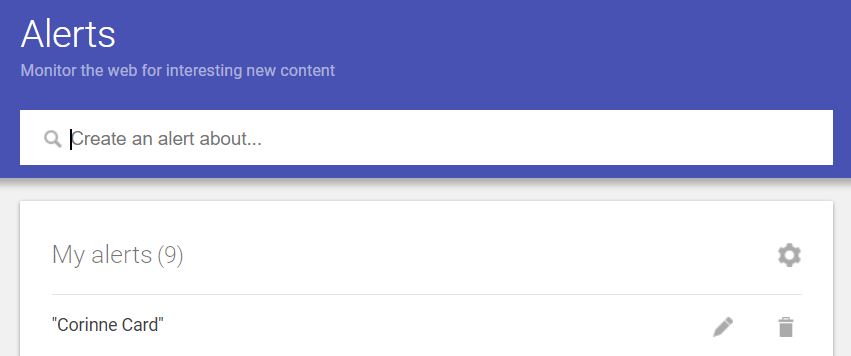
ASK YOUR USER FOR THEIR ADVICE
Asking relevant audiences for their advice is both engaging for them and insightful for you. You can set up a Twitter Poll in seconds and gain fresh information. The poll itself, if written concisely and engagingly, will also be highly shareable. You can also promote the poll to relevant, engaged users. You can use the results to inform your content, or even as a basis for an article in its own right.

DISCOVER DEEPER INSIGHTS
Going beyond the Twitter Poll, a Google Survey provides insights into consumer opinion but also offers demographic information like gender, location and age. Use a one question Google Survey and you can gain 1,000 responses for £100. You can still gain multiple insights by using the multiple choice option.
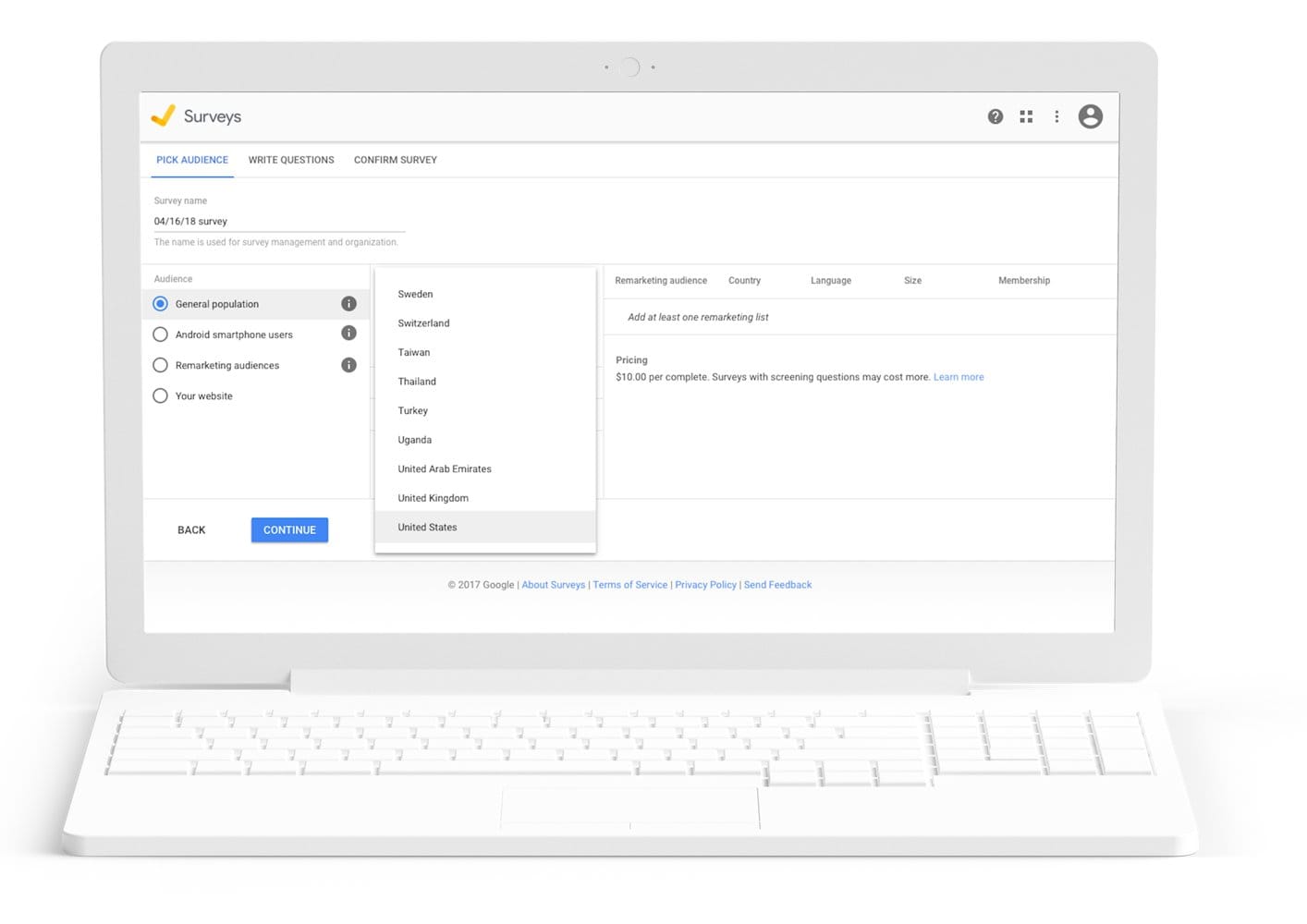
IN THE FUTURE
With technology enabling a host of new software applications, we're expecting to see plenty more exciting content marketing tools come into play in the next couple of years. One example is Yappa. Set to be the world's first insight driven marketing platform, Yappa will use AI and machine learning to help you make better content for your specific audience. We'll keep you updated!
The decline of UK journalism (and what it means for your business)
An independent review revealed this week that UK journalism is in freefall.
Meanwhile, if you have a business and you'd like it to grow, the press is an obvious place to look to build awareness.
But you need to understand the state of the press and the pressures journalists are now under, in order to communicate effectively with them.
What the review found
The independent review into the future of high-quality journalism in the UK, chaired by Dame Frances Cairncross, revealed that:
- Total press industry revenues declined by more than half over the last ten years
- The number of full-time journalists has fallen by over 25% since 2007
- A quarter of all regional and local newspapers have closed in the past decade
These stats are not good news for journalists or, indeed, the press industry as a whole. But what do they mean for the average business owner? Here are three ways you can leverage this knowledge of the press sector to help grow your business.
1. Take the journalist's perspective and provide them with the finished article
When seeking press for our businesses, it's natural to start from our own viewpoint and provide the kind of message that will be best for our business. In the past, there would be journalists ready to receive a press release, look for a possible story and turn it around into something interesting for their readers. Now, you need to do that work for them for your story to stand a chance of being covered.
Less journalists at the news desk means less time for the remaining few to faff about with stories that are clearly promotional, or provide no real value on interest. However, those businesses that do take the time to create something which can be cut and pasted and immediately work will be rewarded with great coverage.

2. Save publications time and money with a superb photoshoot
Whereas even local press would regularly be able to 'send out a photographer' to do a shoot on demand, this is less and less the case for even national papers. Meanwhile, with iPhones able to provide excellent high res photos businesses all have the ability to create and send a good set of photos which help to illustrate their story.
Get clued up on the kind of images your target publications tend to use - usually interesting pictures that help to tell a story - and get going creating them on behalf of those publications, so they don't have to.
3. Make news happen
While journalists used to have more time to put into seeking out the latest stats or compiling in-depth reports on specific industries, this kind of time-consuming, investigative reporting, like everything else in journalism, has far less budget than it used to. Make use of this knowledge by doing the legwork yourself.
Look at wider trends in your industry and provide journalists with sets of data and inventive imagery they simply don't have the time or money to find or create for themselves. As long as the pieces of content your business produces are genuinely interesting to readers, the results you'll gain via a grateful press are likely to far outstrip the time and money you've put into creating them.
How to get newspaper sites to link to you
Getting your business in the news is tough enough. But, when you're trying to get a link included in a story on a major news outlet, the challenge - along with the potential reward - is far higher.

Here's why you need to think carefully about how to get links back from news sites, plus some strategies that work.
The power of inbound links
Inbound links have been a central part of building an online presence since Google’s Larry Page invented PageRank in the late 1990s.
As web link authority Moz explains in 'The Beginner's Guide to Link Building': "Links as a ranking factor are what allowed Google to start to dominate the search engine market back in the late 1990s... it was so effective because it was based upon the idea that a link could be seen as a vote of confidence about a page."
While Google's algorithm has changed hugely since the '90s, the number and quality of inbound links to a site are still used as some of the main factors that determine how well that site ranks in the search engine results pages.
Meanwhile, some of the best quality inbound links are those from news sites. If you can gain regular, inbound links from authoritative news sites, this will help your own site to rank well. And because most news sites have a lot of readers, those links will also bring direct traffic to your site.
News sites
There is no single rule for gaining links from news sites, but one of them is surely 'editorial justification'. For a journalist to include a link, they will need to be able to justify it from the perspective of their typical reader.
So provide something on the site they will be linking to that's both relevant to the story and genuinely useful to the reader. It could be further information on the topic of the story, perhaps a video or gallery of images. But it could also be something a reader can register for, which they will value, or a competition they can enter.
News sites have different policies on links, but there is a surprising amount of autonomy granted to journalists in this respect.
It's always worth thinking about the perspective of a journalist. Journalists are not just writing stories, but also publishing, promoting and distributing them. They want to create good stories, that are well shared across social media. By being a good source, and also by promoting their work via your network, you can help them do their job better and more easily.
It is worthwhile highlighting the strength of your network. Perhaps you have a huge Twitter following, or a newsletter which the story will be added to. Offer a quid pro quo - "if you can add a link, we will definitely share it right across our network" (see step 4 for more on this).
Successful strategies for gaining links from news sites:
- Set up a photo competition and let local news sites know when someone in their area is shortlisted, with a story about the entrant as well as their photo included in the email. But do this while the competition is still open for entries, as then the news site has a reason to link back – so that readers can enter the competition, too.
- Host a downloadable set of results from a survey you've conducted. Provide relevant news sites with a headline statistic, followed by information and quotes about the study. Then link back to the full set of data on your site.
- Describe an upcoming event that readers of a news publication will have a reason to be interested in. There will need to be something surprising or newsworthy event, in order for it to gain press attention. Then, provide a place to register for the event on your site, and link through to that from your article.
- Be a useful contact and source for journalists and then use this relationship as leverage. Try to create ways that make both parties happy. Build a strong network and allow them to benefit from it. Journalists want their stories to be well read and shared, they also want access and exclusive content. Offer them a deal.
How to run a crowdfunding campaign
 At the end of 2017, Full Story Media got involved in the crowdfunding campaign to raise funds for six-year-old Kyra Warrell to undergo life changing surgery. The campaign raised over £50,000 in less than two months. Here are some of the lessons learned.
At the end of 2017, Full Story Media got involved in the crowdfunding campaign to raise funds for six-year-old Kyra Warrell to undergo life changing surgery. The campaign raised over £50,000 in less than two months. Here are some of the lessons learned.
Rima and Neil Warrell needed to raise £58,000 in 58 days for their daughter to have life changing surgery. Kyra had been born with a rare condition which the NHS couldn’t treat.
But Rima had refused to give up. She scoured the internet and found a surgeon in the US, who could help. However, in order to make the surgery affordable, the operation had to be performed in Israel in February 2018.
The family raided all piggy banks and launched a campaign on Chuffed.org. When we met them they had just over £8,000. The clock was ticking…
Choose a dedicated campaigner
Someone has to take the lead in a crowdfunding campaign, and this was Rima Warrell. She was articulate and knowledgeable; able to confidently talk to the press, potential donors and backers. But, most importantly, she was available and responsive. Campaigning is a test of resolve and dedication – there are no breaks, you simply have to keep going.

Get your ducks in a row
Crowdfunding is a sales and marketing exercise. Slick campaigns are months in the making. Slogans are written, plans are drawn and investors are courted long before the campaign is published online. None of that was true for @StepWithKyra. However, the Warrells rallied friends, family, the local community, media and their MP to the cause and played a serious game of catch-up.
Create a compelling narrative
This was where Full Story came in. We created a press release: Brighton Mum vows to fight to save her daughter’s leg. This was sent across the media and gained traction in the local and national media and, most crucially, the Israeli press.
A good press release is a story – a human story. We told of the family’s struggle and the hopes of a little girl. There were a lot of quotes from Rima, explaining their plight. Also, it was filled with key facts - every fact is a potential angle for a journalist to take.
Great imagery
You can’t run a media campaign without pictures. Thankfully, we had a very cute, six-year-old girl, and a photogenic Mum. “Get a photoshoot”, we advised. A photographer friend with a good camera was found and soon the faces of Kyra and Mum Rima were all over the place. Kyra was spread across the front page of the Brighton Argus.
The viral effect
A good story travels. The local media took the story first, but then it took off in the Jewish and Israeli media. Kyra Warrell was featured in the Jerusalem Post. Soon, donations came flooding in from the global Jewish community.
Keep the story going
Once a story is out there, it takes on a life of its own. Those following it and those involved will require constant updates on developments. Social media is very useful in this respect. Ensure your chosen channels are filled with key information and kept up to date. You’ll gain supporters from unexpected quarters. When someone supports you, make sure they feel the love.
Kyra’s campaign raised over £50,000 and she was able to have her surgery. She will require more operations in the future. You can support Kyra now
Top tips for speaking at conferences, from inspiring women in tech
We often recommend that people take opportunities to speak at conferences, to help them get known as an expert in their field.
Well, now, as a business owner, I’m taking my own advice.
In April, I'll be speaking at one of the biggest search conferences in the world: BrightonSEO. And, being a first-time conference speaker, I’ve decided to find out more about what I’m getting myself into.
According to a 2015 survey, only 25% of speakers at tech events are women. I recently joined an international network of over 5,000 women in tech, including some of those 25%. I wondered: what were these women leaders doing in their conference talks, that I could learn from? I put the question to them - here were some of their top tips.
Content
Pick an angle you are excited to talk about, and be excited talking about it, and let no-on steal your fun - they can't have that power unless you give it to them - Sophie Freiermuth
Really key point from a friend: best submissions I get are those that start from the conference purpose rather than what a speaker is expert in - Saffron Governor
People love a story more than dry technical exposition. For a technical talk, a talk about "I had this problem, I had this criteria for a solution. I tried X but it didn't work for Y reason. Then I tried Z, and it wasn't quite right again. Then I tried XX, and it was much better because.... Later we discovered YY was also an issue so we had to modify...." is much more engaging than just starting with dry technical exposition of technology XX - Julie Lavoie
People also love anecdotes, it's what I remember most from talks after I've forgotten all the technical content and it's also what people come up to me talk to me about in my talks as well. It also gives people a point of entry to talk to you about later in the conference - Julie Lavoie
Mix up heavy, technical content with a joke or anecdote, so it's not just monotone one type of thing - Julie Lavoie
Slides
Simple slides work best - don't cram too much info on them. Use a large font size (even bigger than you think). Images say a lot - Saffron Governor
Put your Twitter handle on the bottom of every slide so people can tweet about your talk while you're talking, also so it's easy to contact you - Julie Lavoie
Good-looking slides are nice but you can get away with "crappy" slides if your content is interesting - Julie Lavoie
Practice
Practice how you deliver it (body language and tone) rather than what words you say - Ada Shum
Time yourself when you practice. Your talk should be the time they have asked for. 20 mins means 20 mins - Saffron Governor
I think the best thing you can do is practice. Videotape yourself using your computer or smartphone and watch it and notice how you present and how you can improve. Practice in front of others and ask for their feedback. You'll always perform a little different;y when you are in front of others (you may speed up or slow down), so it's important to have that practice. One of our instructors talks a lot about how your body holds tension when you get nervous - pay attention to where you are holding tension and focus on releasing - Danielle Barnes
If there's a local meetup close to the date of the conference with a similar topic as the conference, you can often ask if they are interested in hearing a prelim version of your talk. Some meetups often just have this already (eg. local Python meetups getting close to PyCon) It's a good way to practice and get early feedback without the pressure of a big audience - Julie Lavoie
I'd also recommend not memorizing your talk word-for-word. It's great to have down your introduction, your close and some transitions, but if you memorize your full talk and get nervous and forget a piece, it can really throw you off. It's also really hard to talk naturally when you are that scripted. Instead, I'd have your key points down (maybe speaker notes and/or small index cards you can reference), and again - lots of practice. Remember your slides are there to guide your audience, not you. Know your talk without your slides, and do your best not to turn your back to your audience to look at them - Danielle Barnes
Tech
If you can check out the venue before-hand, do so. Try to get onto the stage to get a feel for it early in the day so you can own the room - Saffron Governor
Organisers aren't always on top of everything, so make sure you make yourself known on arrival and find out the procedure for micing up - Saffron Governor
Come with your laptop and all possible connectors to a projector, and have your own remote, too. I love the Logitech one, highly ergonomic, and free yourself from being stuck at the lectern, and looking at the keyboard to navigate your slides - Sophie Freiermuth
Some conferences will have a speaker room, where they'll let you practice with your laptop and the type of projector they'll have in the room. If they don't have this, you can ask if there's an empty time you can try out your laptop with the projector, mike, etc in the room where you'll be speaking. I try to do this - Julie Lavoie
If you have a Macbook or some other common laptop, they'll usually have an adaptor for your laptop, but you might want to check for other laptops or if you're using Linux - Julie Lavoie
Appearance
If they attach a mike to you vs. speaking into a stationary mike, tie your hair or else your hair will rustle in the mike the entire time, and in the recordings - Julie Lavoie
If they're video recording the talk, take off your conference badge before speaking, or else it will be distracting in the video - Julie Lavoie
If you have a chance to see the room ahead of time, it's a good idea to wear clothing that contrasts a bit with the background of where you'll be talking, so no black shirt if the background is black or you'll look like a floating head - Julie Lavoie
Nerves
Visualise you're on stage and under limelight with tons of people before the event - Ada Shum
Don't be afraid of feeling nervous, let the nervous feeling carry over into adrenaline and energy to put into your performance - Julie Lavoie
Remember: if they approved your proposal, they want to hear what you've got to say - Saffron Governor
Ensure the start goes well. After that it should just flow - Ada Shum
Everyone wants to see you do your best, they’re on your side - Saffron Governor
One of our instructors recommends a quick meditation before going on stage and some voice exercises, like tongue twisters or singing - you can do it in the bathroom or outside, before you start to warm up your voice - Danielle Barnes
How to talk
Vary your tone. Speaking in the same tone all the time makes people fall asleep, whereas a variation feels dynamic and keeps people interested - Julie Lavoie
It's always good to try to speak more slowly since you're likely to speed up from feeling nervous - Julie Lavoie
If you get stuck at any point, just pause and take a breath. Pauses are actually a great way to give the audience a moment to process what has been said, and can help you stay calm and reset if needed. Everything, including a pause or breath, seems like it takes much longer on stage - 10 seconds can feel like 10 minutes - so it never seems as long to the audience as it does to you - Danielle Barnes
Martha Graham said something to the effect that in every audience, there is one person and one only that one really performs for. I find it helps to find a sympathetic face and imagine that I'm speaking to them specifically. Of course, not staring at them the entire time, but returning to their face - Julie Lavoie
I knew a guy early on who was just a fantastic public speaker, and (this sounds a bit weird but the technique works for me), I "imagine" that I'm him, giving my talk, his energy, his mannerisms, his ultra-confidence, sort of acting in a way, and it really helps me - Julie Lavoie
Recommended resources
Power poses are a great warm up to help you feel confident - Danielle Barnes
Scott Berkun's book Confessions of a Public Speaker is chocabloc full of great tips and advice - Sophie Freiermuth
Sam Kap wrote a great article a while back about prepping for a talk - Danielle Barnes
Have a look at the YouTube videos by Metaspeech, they have some good tips - Mary Matthews
Toastmasters is an excellent place to cut your eye teeth and build confidence - Saffron Governor
Thanks to:
Saffron Governor, Ada Shum, Sophie Freiermuth: www.baguetteUX.com, Julie Lavoie: almosteverywhere.github.io, Danielle Barnes: womentalkdesign.com, Mary Matthews: www.memrica.com, James Governor & Steve OGrady: redmonk.com
How to get press for your tech startup
Creating the solution was the easy part, but now try explaining it
Technology entrepreneurs are often tremendously talented, clever and capable individuals. Some of the business plans I’ve witnessed recently are off the chart in terms of both ambition and potential impact – lab grown meats, nano-tech satellites, pollution-busting energy, not to mention the super smart AI software, which becomes more apparent by the day.
But while the leaders of these companies excel in the labs and development suites, they often face a tougher time when they head out into the real world.
Many tech entrepreneurs find it hard to explain to the man on the street what they do and, crucially, why they should really care. Talking to your peers and fellow scientists is one thing - Joe Public is quite another.
The media, who relay this information to Joe, is another challenge. Most journalists, myself included, studied arts and humanities at university, rather than science. Appreciating the importance and significance of start-ups is a challenge, and we are going to have to up our game.
But technology entrepreneurs that want coverage in the media must also learn how to communicate effectively. Every entrepreneur needs a story which can be understood by everyone. The jargon of the lab or peer group needs to be ditched and replaced by plain English. For many, this is a big challenge.
Here are five ways you can overcome the challenges and make your tech startup famous:
1) Tell us your story
Journalists want to know who you are and how you came to be working in your business. So - what’s your story? How did you come to develop your technology? Was there some kind of Eureka moment? The human story is very important.
2) Focus on the benefits
Rather than trying to describe every intricate detail, start off by explaining the end result. What problem does your technology actually solve? Does it make something cheaper, safer or more convenient? Give people a reason to want it and the details can come later.
3) Think about visuals
Every story needs a picture. If you can hold your kit in your hands and be photographed with it, that’s great. But if not, think about its impact and how that might be illustrated. A professional photoshoot is a must for media-facing businesses. Also, a good YouTube video can be very effective.
4) Emphasize your credentials
With so many big ideas floating around, it’s a challenge for journalists to gauge how credible an entrepreneur is - so we investigate their background. But entrepreneurs can help by creating a bio containing useful information such as university background, professional experience, investor backing and status of your intellectual property. That, along with an up to date LinkedIn or other online profile, will make a good first impression.
5) Be prepared to substantiate what you say
In a world of mind-blowing technology, journalists need verification of the big claims entrepreneurs make. Entrepreneurs need to get their facts and figures straight before communicating in public and then be able to back up what they say. Backing from an authoritative source such as an academic institution, research group or government body can be effective. If possible, it makes sense for journalists to be able to experience it for themselves, so offer free trials.
Jon Card has worked as a journalist for 15 years and writes regularly for The Guardian, Daily Telegraph and The Times about entrepreneurs and technology. He regularly runs training sessions on how startups can gain more press.






